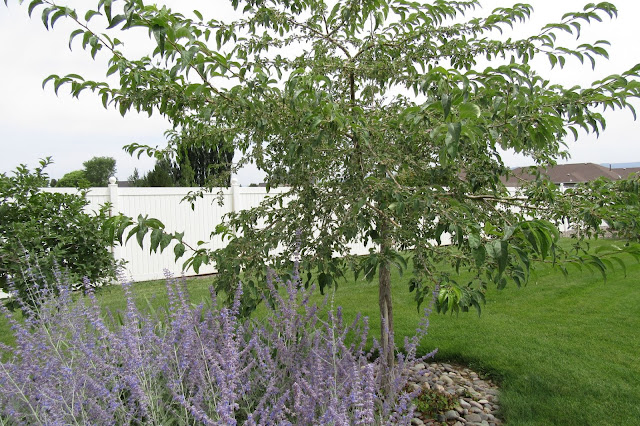 |
| Pears and other fruits can be used to make fruit purees. |
Many
of our best garden fruits ripen in the warm days of summer and early fall. It’s
really too hot then to feel like making preserves. Since we have freezer space, we often clean
and core/pit the fruits, then freeze them for later use. We don’t remove the
skins; they’ll come off easily when fruits are thawed. We also cut the larger fruits (like pears) into
½ inch pieces. That way they are ready
for making jam or other preserves.
 |
| Hawthorn fruits |
This
year produced a bumper crop of fruits in our neighborhood. As neighbors tend to share, we were blessed with
an abundance of plums, apricots, pears and peaches, in addition to our own crab
apples, quince and hawthorn. Many of the
fruits this year were small – a challenge for removing the pits before
freezing. But that’s not a problem, provided you want to make juice and/or fruit puree.
 |
| Cooking plums to make plum puree |
Just
place frozen fruits in a large cooking pot, barely cover with water, then heat
to boiling. After the mixture comes to a
boil, reduce heat, cover and cook at a low temperature until the fruit is soft,
stirring occasionally.
 |
| Foley Food Mill |
Remove
the hot fruit from the stove. If there’s
lots of juice, pour off the juice and use it for making jelly or syrup. Process the rest of the fruit mixture to create
the puree. For fruits with no/small
seeds, we like to process using a Foley Food Mill (above). This clever device allows you to easily
create fruit puree from hot cooked fruit.
It’s also great for making apple sauce, pear sauce and fruit butters. You
can purchase a Foley mill from kitchen stores or on-line.
 |
| Straining plum puree through a colander |
If
your fruit has large seeds (pits), you’ll need to strain the hot fruit using a colander
or large sieve. Simply push the mixture
through the sieve, using a cooking spoon or scraper. It takes a little work, but isn’t too
difficult. Discard the remaining
pits/skins.
Taste the puree. If it’s too tart for your liking, add sugar
to taste. But, unless you're making fruit leather, we suggest leaving your puree a little tart. You can always increase the sweetness when using the puree in a recipe.
At
this point you can cool the puree and create fruit leather using a
dehydrator. You can also freeze the
puree for future use (we suggest freezing in pint-size portions). Or preserve
it, using the boiling water bath canning method.
 |
| Plum puree (l) and juice |
If
canning, return the puree to the cooking pot.
Heat over medium heat until the mixture comes to a full, rolling boil,
stirring frequently. Ladle hot puree
into hot, sterilized, pint-size canning jars.
Process in boiling water bath for appropriate time (10 minutes below
1000 ft elevation; add 1 minute for every 1000 ft. above 1000 ft.
elevation). After processing, cool,
label and store in a cool, dry place.
Purees will last up to 2 years if processed this way.
Fruit
purees are a convenient staple to have on hand.
We’ll share some recipes that use fruit purees next month.
 |
| Jars of Apricot, Plum and Quince Purees |
_________________________________
We welcome your comments (below). You can also send your questions to: monaturesmontrosegarden@gmail.com


















